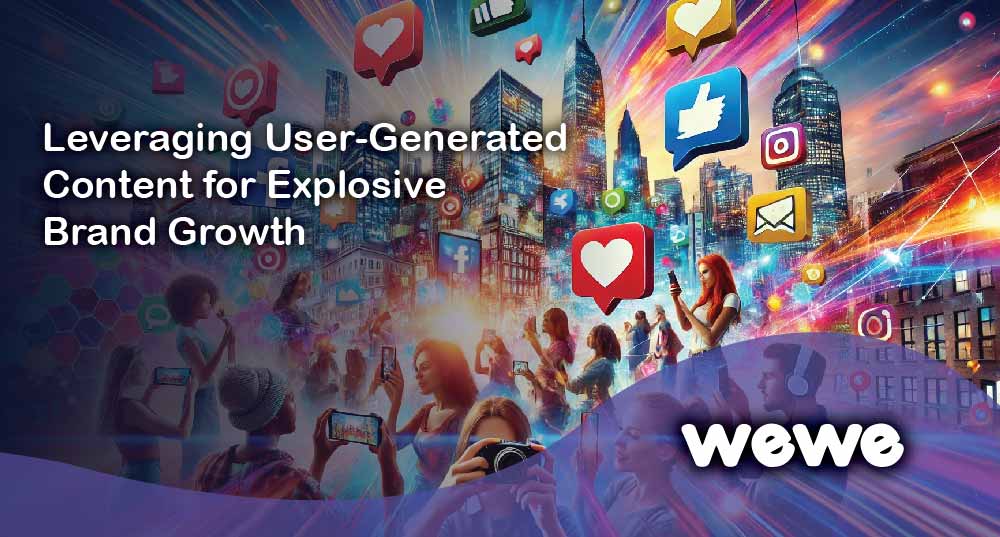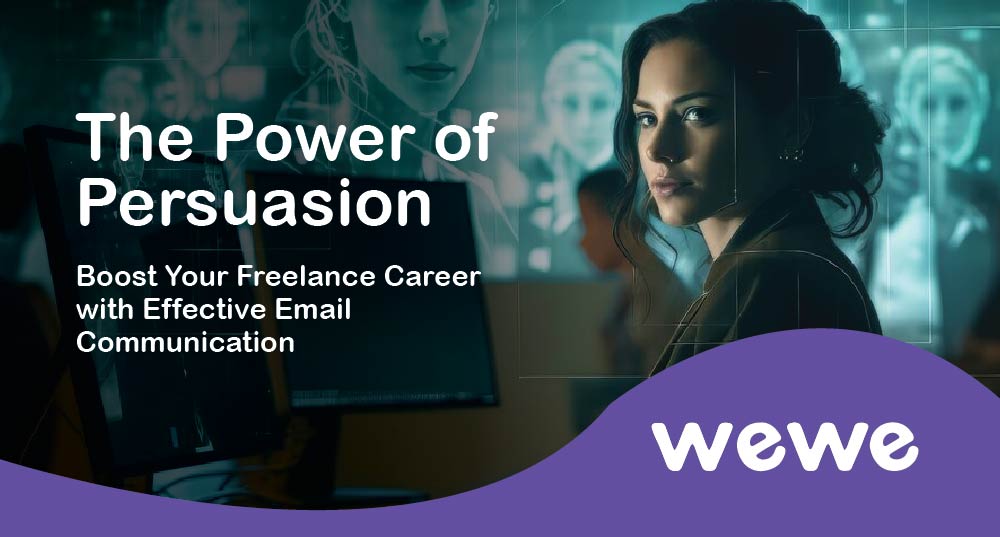
WeweBlogsSlider-02
Leveraging User-Generated Content for Explosive Brand Growth
July 3, 2024Others
In today’s rapidly evolving digital landscape, brands are constantly seeking innovative ways to enhance their visibility, engagement, and overall growth. One highly effective strategy that has gained significant traction is leveraging user-generated content (UGC). By tapping into the authentic and diverse perspectives of their audience, brands can create a more relatable and trustworthy image. This article explores the various facets of user-generated content and how it can be harnessed to drive brand growth. Understanding User-Generated Content User-generated content refers to any form of content—be it text, videos, images, reviews, or social media posts—that is created by individuals rather than brands. This type of content is often shared voluntarily by users who are enthusiastic about a product, service, or brand. The authenticity and spontaneity of UGC make it a powerful tool for brands looking to build genuine connections with their audience. Types of User-Generated Content There are several types of user-generated content that brands can leverage to boost their growth: 1. Social Media Posts: Social media platforms like Instagram, Twitter, and Facebook are hotspots for user-generated content. Users often share their experiences, opinions, and photos related to brands, providing authentic testimonials and visual content. 2. Reviews and Testimonials: Customer reviews and testimonials on platforms like Yelp, Google Reviews, and Amazon are crucial forms of UGC. They offer potential customers honest insights into products or services, significantly influencing purchasing decisions. 3. Blog Posts and Articles: Blogs and articles written by users about their experiences with a brand can provide in-depth insights and enhance credibility. Guest posts on the brand’s official blog can also add value. 4. Videos: User-created videos, including unboxings, tutorials, and reviews on platforms like YouTube and TikTok, are highly engaging and impactful forms of UGC. 5. Hashtags and Campaigns: Branded hashtags and social media campaigns encourage users to share content related to a brand, creating a community-driven narrative. Benefits of User-Generated Content for Brand Growth Authenticity and Trust One of the primary benefits of user-generated content is its authenticity. Unlike traditional advertising, which can sometimes be perceived as biassed or insincere, UGC comes directly from real users. This authenticity builds trust among potential customers, as they can see genuine experiences and reviews from their peers. Enhanced Engagement User-generated content fosters a sense of community and involvement. When users see their content shared or acknowledged by a brand, it encourages more engagement and interaction. This increased engagement can lead to higher brand loyalty and a stronger connection between the brand and its audience. Cost-Effective Marketing Leveraging UGC is a cost-effective marketing strategy. Instead of investing heavily in creating new content, brands can utilise the wealth of content already being produced by their users. This not only saves resources but also provides a continuous stream of fresh, diverse content. Improved SEO and Online Visibility UGC can significantly boost a brand’s SEO efforts. Content created by users often includes relevant keywords and phrases, enhancing the brand’s search engine rankings. Additionally, user-generated reviews and testimonials can increase the brand’s visibility on review platforms and social media, driving more organic traffic to the brand’s website. Social Proof and Influence User-generated content serves as powerful social proof. When potential customers see others enjoying and endorsing a product or service, they are more likely to trust the brand and make a purchase. Influencers and loyal customers sharing their positive experiences can greatly amplify a brand’s reach and credibility. Strategies for Leveraging User-Generated Content Encouraging Content Creation To effectively leverage UGC, brands must actively encourage their audience to create and share content. This can be achieved through various tactics, such as running contests, offering incentives, and creating branded hashtags. For example, a travel brand might encourage users to share their vacation photos using a specific hashtag for a chance to win a free trip. Showcasing User Content Once users have created content, it’s essential to showcase it prominently. Brands can feature UGC on their websites, social media pages, and marketing materials. Highlighting user content not only shows appreciation but also motivates others to contribute. Engaging with Users Engaging with users who create content is crucial. Brands should actively like, comment on, and share user-generated content. This interaction not only fosters a sense of community but also encourages further engagement and loyalty. Integrating UGC into Marketing Campaigns Incorporating user-generated content into marketing campaigns can significantly enhance their impact. For instance, a fashion brand might create an advertising campaign featuring photos and videos of real customers wearing their products. This approach adds a layer of authenticity and relatability to the campaign. Leveraging Influencers Collaborating with influencers who align with the brand’s values can amplify the reach and impact of UGC. Influencers can create and share content that resonates with their followers, introducing the brand to new audiences and driving engagement. Case Studies: Successful UGC Campaigns Coca-Cola’s “Share a Coke” Campaign Coca-Cola’s “Share a Coke” campaign is a classic example of successful user-generated content. The campaign personalised Coke bottles with popular names and encouraged customers to share photos of their personalised bottles on social media using the hashtag #ShareACoke. The campaign generated a massive amount of UGC, significantly boosting brand engagement and sales. Starbucks’ White Cup Contest Starbucks’ White Cup Contest invited customers to doodle on their white Starbucks cups and share photos of their designs on social media. The winning design was then used as a limited-edition Starbucks cup. This campaign not only generated a wealth of creative content but also deepened customer involvement with the brand. GoPro’s Video Contest GoPro, known for its action cameras, leveraged UGC by hosting video contests where users could submit their best GoPro footage. The brand featured the best videos on its social media channels and website. This strategy not only showcased the product’s capabilities but also built a strong community of GoPro enthusiasts. Overcoming Challenges with User-Generated Content Quality Control One of the challenges of UGC is maintaining quality control. Brands need to ensure that the content they showcase aligns with their brand image and standards. Implementing guidelines for UGC submissions
Cybersecurity for Freelancers_Protecting Your Work in a Digital World
June 20, 2024Technology
Freelancing has revolutionised the way we work, offering unparalleled freedom and flexibility. However, with this independence comes the critical responsibility of safeguarding your digital workspace. Cybersecurity for freelancers is an indispensable aspect of modern freelancing that ensures your work, data, and personal information remain secure in an increasingly vulnerable online environment. The Importance of Cybersecurity for Freelancers As a freelancer, you manage all aspects of your business, from client communication to financial transactions. This makes you a prime target for cyberattacks. Understanding the importance of cybersecurity for freelancers is the first step in protecting your digital assets. Without robust cybersecurity measures, you risk exposing sensitive information, losing client trust, and potentially facing significant financial loss. Common Cybersecurity Threats Faced by Freelancers Freelancers are susceptible to various cybersecurity threats. Knowing these threats is crucial for implementing effective protective measures. Common Cybersecurity Threats Faced by Freelancers Phishing attacks involve fraudulent attempts to obtain sensitive information by masquerading as a trustworthy entity. Freelancers often receive emails or messages that appear legitimate but contain malicious links or requests for personal information. Malware and Ransomware Malware and ransomware are malicious software designed to damage or control your computer system. Freelancers might inadvertently download these from seemingly harmless sources, leading to data theft or system lockdowns. Public Wi-Fi Vulnerabilities Working from cafes, libraries, or other public places is common for freelancers. However, public Wi-Fi networks are notoriously insecure, making it easy for cybercriminals to intercept your data. Best Practices for Cybersecurity for Freelancers To safeguard your freelance business, adopting best practices for cybersecurity is essential. These measures will help you protect your work and maintain your professional integrity. Use Strong, Unique Passwords Strong, unique passwords are your first line of defence against unauthorised access. Use a combination of letters, numbers, and special characters, and avoid using the same password across multiple accounts. Consider using a password manager to keep track of your credentials securely. Enable Two-Factor Authentication (2FA) Two-factor authentication adds an extra layer of security by requiring a second form of verification in addition to your password. This could be a text message code, a fingerprint scan, or an authentication app. Enabling 2FA significantly reduces the risk of account breaches. Regularly Update Software and Systems Software and system updates often include critical security patches. Regularly updating your operating system, applications, and antivirus software ensures you are protected against the latest threats. Secure Your Devices and Networks Securing your devices and networks is another crucial aspect of cybersecurity for freelancers. This involves implementing measures to protect your hardware and ensure your internet connections are secure. Install Reliable Antivirus Software Antivirus software detects and removes malicious software from your devices. Choose reputable antivirus software and keep it updated to protect against the latest threats. Use Virtual Private Networks (VPNs) A VPN encrypts your internet connection, making it difficult for hackers to intercept your data. When working from public Wi-Fi, always use a VPN to ensure your data remains private and secure. Encrypt Sensitive Data Encryption converts your data into a code that can only be accessed with the correct decryption key. Encrypting sensitive data, such as client information and financial records, adds an additional layer of security. Cybersecurity Awareness and Training Staying informed about cybersecurity is vital for freelancers. Continuous learning and awareness help you stay ahead of emerging threats and adopt new protective measures. Stay Informed About Cybersecurity Threats Regularly reading cybersecurity news and updates keeps you aware of new threats and vulnerabilities. Follow reputable cybersecurity blogs, subscribe to newsletters, and participate in relevant forums. Take Cybersecurity Training Courses Numerous online platforms offer cybersecurity training courses tailored for freelancers. These courses provide in-depth knowledge about protecting your digital assets and responding to security incidents effectively. Protecting Client Information As a freelancer, you often handle sensitive client information. Protecting this information is not only crucial for maintaining trust but also for complying with legal and contractual obligations. Implement Data Protection Policies Establishing clear data protection policies ensures you handle client information securely. These policies should cover data storage, access controls, and procedures for handling data breaches. Use Secure Communication Channels When sharing sensitive information with clients, use secure communication channels. Encrypted email services and secure file-sharing platforms help protect the integrity and confidentiality of the information you exchange. Financial Security Measures for Freelancers Freelancers manage their finances online, making financial security an essential aspect of cybersecurity. Implementing robust financial security measures helps prevent fraud and unauthorised access to your funds. Use Secure Payment Platforms Choose reputable payment platforms with strong security measures for invoicing and receiving payments. Platforms like PayPal, Stripe, and TransferWise offer secure payment processing and fraud protection features. Monitor Financial Transactions Regularly Regularly monitoring your financial transactions helps you quickly identify any unauthorised activity. Set up alerts for suspicious transactions and review your account statements frequently. Developing a Cybersecurity Plan Creating a comprehensive cybersecurity plan is essential for freelancers. This plan should outline the steps you will take to protect your digital assets and respond to security incidents. Identify Your Assets and Risks Start by identifying your digital assets, such as client data, financial information, and intellectual property. Assess the potential risks associated with these assets and prioritise your security measures accordingly. Establish Security Protocols and Procedures Define clear security protocols and procedures for protecting your assets. These should include guidelines for password management, software updates, data encryption, and incident response. The Role of Backup in Cybersecurity Regular backups are a critical component of cybersecurity for freelancers. They ensure you can recover your data in case of a cyberattack or system failure. Implement Regular Backup Schedules Schedule regular backups of your important data to external drives or cloud storage. Ensure your backup solutions are reliable and secure. Test Your Backup and Recovery Processes Regularly test your backup and recovery processes to ensure they work effectively. This helps you identify and resolve any issues before a real incident occurs. Cybersecurity Tools and Resources for Freelancers Leveraging cybersecurity tools and resources can significantly enhance your
The Future of Web Development: Emerging Trends for Business
June 5, 2024Technology
The world of web development keeps evolving in this fast-paced, dynamic era. An efficient website can significantly impact a business’s traffic and sales volume. However, with 1.13 billion websites worldwide, making one’s website stand out can be challenging.To remain competitive and reach a wider audience, embracing innovation and delivering engaging and immersive digital experiences is the need of the hour. How do I achieve that? Well, understanding modern web development trends and technologies is the key!In this article, you will explore the emerging web development trends that every business must be aware of in 2024. Let’s dive in! 10 Web Development Trends for Business 1. No-code and Low-code Tools Gone are the days when web developers had to spend long hours coding. With the emergence of low-code and no-code tools, developing and launching websites have become more straightforward. These tools save developers’ time and enable businesses to thrive in the competitive landscape. That is why the market size of low-code development platforms was USD 16.3 billion in 2021 and is likely to reach USD 148.5 billion by 2030. With these tools, you can launch your web apps faster on the market and appeal to more users. The drag-and-drop functionalities, pre-built user interfaces, reusable codes, ready-made components, and single-click deployment process speed up the web development. Moreover, identifying and fixing potential bugs becomes simple and easy.As a result, you can launch flawless applications on the market faster and gain an edge over your competitors. Also, maintaining and updating these apps is relatively more straightforward. 2. Progressive Web Apps (PWAs) Progressive web apps (PWAs) aren’t new but have recently gained immense popularity. They combine the best of websites and mobile apps to deliver highly optimised user experiences. Renowned companies like Twitter, Starbucks, and Uber leverage PWAs for enhanced user experiences.With the increase in mobile device usage, the need to revamp web applications for PWAs has become more crucial. Progressive web apps are highly responsive, quick to load, and can function without an internet connection. As a result, delighting the users and winning their trust and loyalty becomes easy for business. Moreover, PWAs are also beneficial from an SEO point of view. Search engines index PWAs and enable them to appear on the search engine result page. 3. Voice Search Optimization In this fast-paced era, more and more people prefer voice search instead of typing their queries. Therefore, optimising websites for searching through audio feeds has become essential.Voice search optimisation involves including specific and relevant keywords people use in voice queries. Websites need to be designed to allow the search engine to identify content relevant to the concern. Adding a conversational style to the content can help search engines stay ahead of the curve. 4. Blockchain in Web Development In recent times, incidents of cybersecurity attacks have been increasing. As a result, users always have questions about the security of their personal and financial data online.Therefore, the use of blockchain technology in web development is on the rise. It ensures immutability and transparency and guarantees optimum security of online transactions.Moreover, blockchain makes changing, hacking, or manipulating information in the system complex so users can rest assured about the safety and security of their sensitive data.Blockchain in web development helps boost the credibility and trustworthiness of websites. Ultimately, it helps attract more users and enhances their satisfaction rates. 5. VR and AR Technology The use of augmented reality and virtual reality is transforming the web development landscape significantly. While AR offers an interactive real-world experience to the users, VR provides an immersive and stimulating experience. VR and AR technologies are ideal for developing eCommerce, educational, architectural, tourism, and gaming websites. They deliver interactive and personalised experiences to users and enhance their online experiences. 6. AI Integration Customers may want to interact with websites regardless of the time of day. However, business customer support teams aren’t available 24 hours a day and seven days a week to answer users’ queries. That is where the use of AI in web development proves to be a beneficial and acceptable trend.AI, in the form of chatbots, can help provide instant customer support. Moreover, it can offer personalised content recommendations based on the user’s search history and specific needs. Integrating AI in web development is the key to enhancing website functionality. It not only enhances efficiency but also improves user engagement.Artificial intelligence also proves to be beneficial for SEO optimisation. Wondering how? It is no surprise that search engine algorithms are evolving at a rapid pace. AI helps businesses quickly adapt to changes and improve their search engine results page rankings. 7. Serverless Architecture Serverless architecture will become more mainstream in the coming years. It allows the development of web apps without handling infrastructure administration. This means the web developers will only have to create and deploy their code. A cloud service provider will be responsible for setting up the servers on which the apps, storage systems, and databases will function. As a result, when the traffic to headers on your website increases, you do not have to worry.One of the prominent benefits of leveraging serverless architecture in web development is scalability. You can conveniently scale up or down your web applications based on user demand.As a result, when the traffic to headers on your website increases, you do not have to worry about infrastructural limitations. It will expand as needed; you just need to pay for the resources you are using. 8. Motion UI In the modern era, consumers are not just looking for mobile-friendly and faster digital experiences but also interactive ones. That is where Motion UI comes into the big picture.Motion UI is a front-end framework that allows developers to build fully responsive web apps and use pre-defined motions in a native app setting. This skeleton makes it easier for developers to add elements like bounce, slide, transition, and spin to the websites.The best part is that motion UI can be added to any part of the website. However, the appropriate places to include it
Crafting Compelling Narratives_The Freelancer’s Guide to Storytelling
April 24, 2024Marketing
When operating in a digital environment saturated with competition, freelancers face the challenge of distinguishing themselves from the crowd. Through all of this chaos, the power of narrative shines through as a guiding light of genuineness and emotional connection. How can freelancers use this powerful tool to carve out a specific niche for themselves and develop stronger ties with their customers? In this lesson, we will look into the art of storytelling and how it may be adapted to fit the freelancing global environment. Understanding the Essence of Storytelling for Freelancers When it comes to freelancing, storytelling goes beyond only promoting oneself; it is about establishing trust and relationships with prospective customers. Your narrative lends a sense of humanity to your services, making them more approachable and intriguing, regardless of whether you are an experienced freelancer or just starting. Know Your Audience: Understanding Freelancer Pain Points Get into the heads of your audience, which consists of prospective customers interested in your services before you start writing your story. To what extent do they struggle with it? Which objectives are they working towards accomplishing? By putting yourself in their shoes and empathizing with their challenges and goals, you can better modify your narrative to meet their requirements. Uncover Your Unique Freelancer Story Freelancers have tales begging to be shared, but only some of those stories are as engaging as others. You should go deeply into your experience as a freelancer and emphasize the challenges you’ve overcome, the abilities you’ve cultivated, and the principles that characterize your work ethic. In freelance writing, your narrative is the most critical component of compelling storytelling. Embrace Authenticity: Your Freelancer Superpower Your ability to be genuine is your greatest strength in a world where polished portfolios and well-manicured profiles are commonplace. Have the courage to be candid, share your successes and failures, and watch as trust grows. Authenticity is the currency required to cultivate long-lasting connections with customers. Structure Your Narrative: Captivate Clients with Compelling Stories Your story should be crafted accurately, according to a systematic framework that will engage prospective customers. Begin with an enthralling introduction, present yourself as the protagonist who is relevant to your audience, discuss the difficulties that your customers are experiencing, and then offer your services as a solution to those difficulties. Being able to master this structure is essential if you want to keep the interest of your audience. Engage the Senses: Creating Immersive Freelancer Experiences Engage the senses of prospective customers to create an immersive experience for them. Using your words, you may portray vivid pictures, arouse emotions, and stimulate their imagination. By delivering rich sensory stories, you may help people visualize the transforming influence that your services will have. Leveraging Multiple Platforms: Expanding Your Freelancer Reach In storytelling, more than conventional means is required in today’s linked society. When you want to enhance your message, you should investigate a variety of outlets, including professional networks and social media sites. Your approach to storytelling should be tailored to each platform to have the most possible effect and reach. Harnessing the Power of Testimonials and Portfolio Showcases Your attempts to build a narrative should include portfolio presentations and testimonials from satisfied customers. To demonstrate the actual benefits of your effort, you must ensure that your delighted customers become the stars of your story. Using these endorsements, you may add credibility and authenticity to your tale of being a freelancer. Measuring Impact and Iterating: Fine-Tuning Your Freelancer Narrative Monitor the results of your attempts to convey a narrative and make adjustments depending on the comments and data you get. To determine how successful your story is, it is essential to keep track of important metrics such as client engagement, conversion rates, and client satisfaction. You can maintain the freshness and relevance of your freelancing tale by experimenting with various storytelling styles. In conclusion, creating stories is not just a marketing strategy for freelancers; it is also an effective tool for establishing connections, cultivating trust, and acquiring customers. Your freelancing business might reach new heights if you can master the art of producing fascinating tales that connect with your audience. Allow your freelancing narrative to capture customers and accelerate your success by embracing your one-of-a-kind tale, letting your imagination run wild, and embracing your uniqueness.
Latest Blog

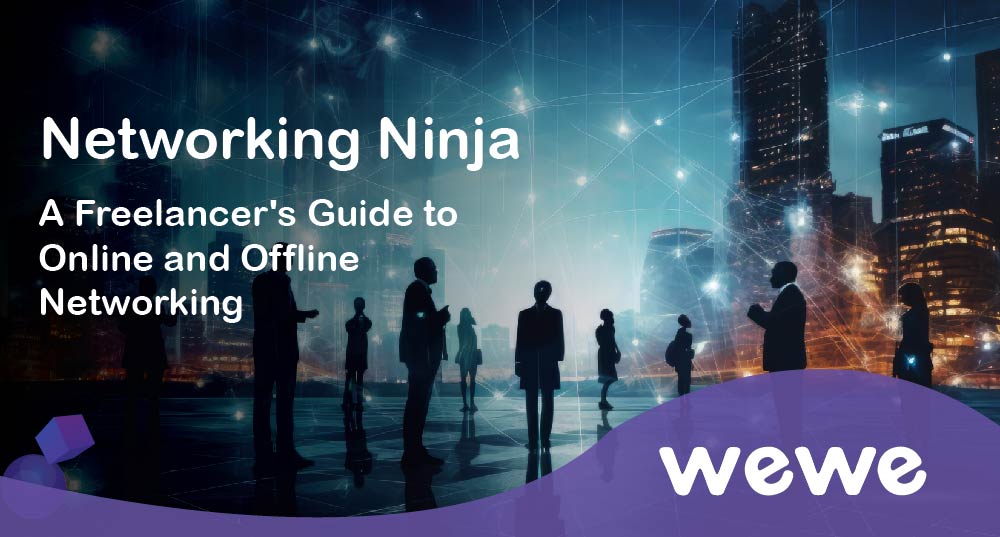


All Blog



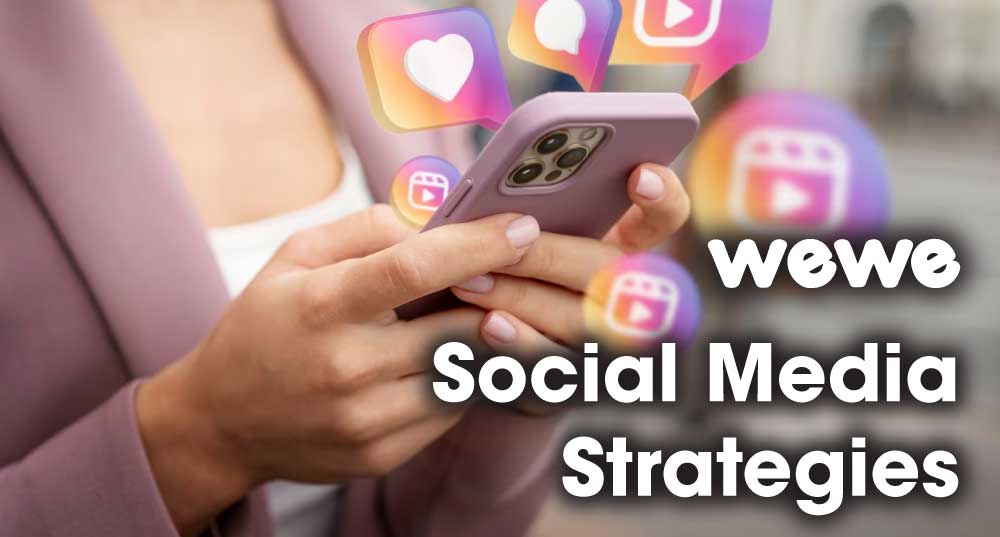


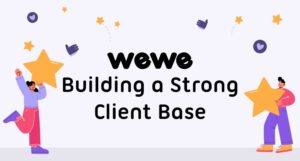






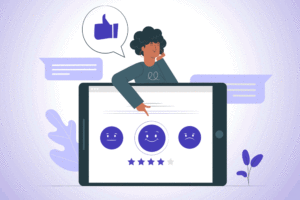

Scroll to Top

